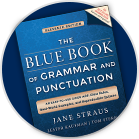A Study of Style: The U.S. Military
|
|
Our exploration of American English strives to venture even further than the principles that guide writing with precision and eloquence. We are also interested in the language variances beyond what we accept as common for information exchange.
For example, we know that United States can be abbreviated, often as either US or U.S. One might wonder why a seemingly minor matter has a discrepancy instead of an agreement on a universal treatment. Perhaps the answer lies simply in the diversity of groups and individuals that communication serves.
Many stylebooks exist to aid greater consistency of the vast details that go into writing. Just a few examples are The Associated Press Stylebook, The Chicago Manual of Style, and the Publication Manual of the American Psychological Association. Each provides an organized, decisive framework for more-homogenous writing within particular sectors.
The United States military is yet another organization that has its own style points within the greater English lexicon. For our current discussion, we examined the Writing Style Guide and Preferred Usage for Department of Defense Issuances and two websites that address military writing style, Military OneSource and Executive Services Directorate.
The following are some items we noted as distinctive within military usage. We also compare each with direction from either AP or CMOS, our two main style references.
Numbers
| • |
When two or more numbers appear in a sentence and one of them is 10 or larger, use numerals for each number (e.g., About 40 people competed in 3 separate events.). |
|
• |
AP: In general, spell out one through nine; use figures for 10 or above. |
|
• |
CMOS: Spell out numbers from zero through one hundred. However, maintain consistency within the immediate context, e.g., About 105 people competed in three separate events: 55 adults in the two marathon runs and 50 youngsters in the relay race. |
| • |
To express a percentage, always use the percentage sign (%) with a numeral (e.g., 20%). |
|
• |
CMOS: Use a figure for the number; the % symbol for scientific and statistical content (e.g., a 4% reduction in bacterial growth); and "percent" in humanistic content (e.g., The approval ratings fell to 35 percent.). |
Capitalization
Capitalize terms such as Federal, Government, Union [of the United States], Service [Armed Forces], Administration, and Commonwealth both as nouns and adjectives when referring to the United States or its institutions: e.g., They work for the Federal agency, They work for the Department [e.g., of Defense], They thanked the Service member for his distinguished career.
|
• |
CMOS: Full names, and often shortened names, of legislative, deliberative, administrative, and judicial bodies, departments, bureaus, and offices are capitalized. Adjectives derived from them are usually lowercased, as are paraphrased designations, except abbreviations.
Thus, CMOS would write: They work for the federal agency, They work for the Department [of Defense], They thanked the service member for his distinguished career. |
Abbreviations and Acronyms
| • |
Spell out United States when it is used as a noun. When it is used as an adjective or is preceding the word Government or the name of a government organization, use U.S. (no spaces). Always spell out United States when it appears in a sentence with the name of another country.
Examples
The exchange students are studying the judicial system of the United States.
The diplomats are interested in learning even more about U.S. foreign policy.
The United States-Canada trade relationship is strong. |
|
• |
AP: The abbreviation [U.S.] is acceptable as a noun or adjective … In headlines, it's US [no punctuation]. |
|
• |
CMOS recently changed its guidelines to allow US as a noun as well as an adjective provided the meaning is clear from the context. |
| • |
The acronyms DoD (Department of Defense), OSD (Office of the Secretary of Defense), and U.S. do not need to be established [i.e., spelled out] upon first use. |
|
• |
AP: Use Department of Defense (DOD or Pentagon acceptable on second reference).
Also: Some organizations and government agencies are recognized by their initials. If the entry for such an organization notes that an abbreviation is acceptable in all references or on second reference, that does not mean its use should be automatic. Let the context determine it … Names not commonly before the public should not be reduced to acronyms solely to save a few words. |
Punctuation Spacing
For colons and periods, place two spaces between the punctuation and the text that immediately follows it. For commas and semicolons, place one space between the punctuation and the text that immediately follows it. (Note: Within civilian communication, one space after colons and periods is the standard in the leading style guides we've consulted.)
Word Choice
The following are just a few examples of preferred terminology listed in the Writing Style Guide and Preferred Usage for Department of Defense Issuances.
| Instead of |
Use |
| Armed Services |
Military Services |
| coincidentally |
at the same time |
| prevalent |
widespread |
| retirement pay |
retired pay |
| workman's compensation |
worker's compensation |
In the future we plan to look at other style guides to widen our awareness of how resources both resemble and differ from one another.
|
View and comment on this
article on our website.
|
|
Free BONUS Quiz for You!
[[firstname]], because you are a subscriber to the newsletter, you get access to one of the Subscribers-Only Quizzes. Click here to take a Capitalization Quiz and get your scores and explanations instantly!
We will be adding many more quizzes this year to our already substantial list of quizzes. If you have suggestions for topics we have not yet covered, please send us a message at help@grammarbook.com.
|
Hundreds of Additional Quizzes
at Your Fingertips
Subscribe now to receive hundreds of additional English usage quizzes not found anywhere else!
Teachers and Employers
Save hours of valuable time! You may assign quizzes to your students and employees and have their scores tallied, organized, and reported to you! Let GrammarBook.com take the hassle out of teaching English!
"Fun to test my skills."
"The explanations really help ... thanks!"
"I can select the quizzes to assign to my students, and then the results are reported to me automatically!"
|

|
Don't need all the quizzes?
You can now purchase the same quizzes individually for ONLY 99¢ each.
Purchase yours here. |
If you think you have found an error in a quiz, please email us at help@grammarbook.com
|
 |
The Blue Book of Grammar and Punctuation
by Jane Straus, Lester Kaufman, and Tom Stern |
The Authority on English Grammar! Eleventh Edition Now Available
An indispensable tool for busy professionals, teachers, students, homeschool families, editors, writers, and proofreaders.
Available in print AND as an e-Book! Over 2,000 copies are purchased every month!
The publisher of The Blue Book, Jossey-Bass, A Wiley brand, is offering a 35 percent discount for those of you who order the book through Wiley.com. Shipping and tax are not included. Simply go to bit.ly/1996hkA and use discount code E9X4A.
Offer expires December 31, 2020.
|
Wordplay

|
 |
English In A Snap:
68 One-Minute English Usage Videos FREE |
Learn all about who and whom, affect and effect, subjects and verbs, adjectives and adverbs, commas, semicolons, quotation marks, and much more by just sitting back and enjoying these easy-to-follow lessons. Tell your colleagues (and boss), children, teachers, and friends. Click here to watch.
|
|





